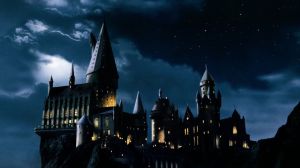There are certain books that define your younger years, experiences that all these years later you still look back on fondly, or in some cases not so fondly. It can be argued that the Spider-Man Clone Saga was one such example, but it’s typically cast in a negative light. Critics of the storyline aren’t wrong per say, but there are some worthy characters and moments that came out of the whole thing.
Videos by ComicBook.com
For those who have either forgotten purposefully about the story arc or have never basked in the glow of 90’s nostalgia, the Clone Saga was originally intended to be a three-month long Spider-Man story that crossed over to all four titles at the time. The Jackal, known as Miles Warren, originally cloned Gwen Stacey after her death at the Green Goblin’s hands. He also cloned Spider-Man numerous times, and ultimately was successful in creating a duplicate Spider-Man, but both Warren and this new clone were thought to have died in an explosion after a battle with the real Spider-Man.

That premise formed the basis for this new Clone Saga, where Jackal and his successful duplicate had actually survived the explosion and left to his own devices Jackal had managed to make even more clones. This brings to the forefront two positives of the Clone Saga, those being Kaine and Ben Reily the Scarlet Spider. It’s actually their immediate popularity (and huge sales of course) to change direction and prolong the Saga past its expiration point, which led to a myriad of story issues. Still, Kaine and Scarlet Spider have made numerous returns to the books, including Kaine’s recent reappearance in Dan Slott’s current Clone Conspiracy arc, and without the Clone Saga neither would exist.
The cool thing about the Clone Saga is that it drew from previous classic lore without decimating it (at the beginning that is). Having someone long thought dead return to the living isn’t new hat in comic book land, but the revelation of Parker’s clone living all these years in isolation because he didn’t want to interfere with Peter’s life immediately endeared him to fans. That aspect of the story couldn’t have been achieved with anyone else, and even with all of the extraneous clones that get thrown into the mix later on, it’s still a strong story beat that continues until the end.

There’s also something to be said for going with that ending, and while it might not have been the intended one, it sure left an impression. Marvel is no stranger to controversial storylines, and this one certainly was. Having Peter proved to be the actual clone was truly shocking, and Marvel didn’t immediately pull the plug on the revelation either. If you’re going to do something like that from a story perspective, you should have the poise to let it stand for awhile before reverting back to the status quo, and Marvel let things sit for about a year before they ultimately revealed that Peter was, in fact, the true Spider-Man.
It should also be noted that if you want to see some classic Spider-Man art, you can’t go wrong with Mark Bagley, who is rightfully considered among the best when it comes to old web-head, especially his work in Amazing Spider-Man #400. Along with writer J.M. DeMatteis, the duo created a fantastic Spider-Man story that saw the death of Aunt May, and if you take it on its own (without the retcon that came later), it’s a very bright spot within the Clone Saga storyline.

The Clone Saga is full of problems, sure, though most of them stem from outright greed. Be that as it may, the series still managed to make some beneficial additions to Spider-Man lore, and should be recognized for it. The Clone Saga should not be tossed aside as a failure, but as a severely flawed yet still entertaining romp through Spider-Man history.








